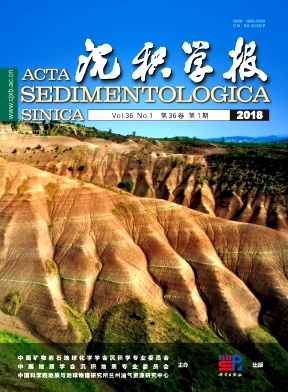Research based on Isochronous Surface about Shallow-water Deltas and Fluvial Sedimentary System: A case from Duo1 Member of Paleogene in Huangjue Area, Gaoyou Sag
doi: 10.3969/j.issn.1000-0550.2018.013
- Received Date: 2017-03-27
- Rev Recd Date: 2017-05-05
- Publish Date: 2018-02-10
-
Key words:
- Huangjue area /
- Subei Basin /
- Sanduo Formation of Paleogene /
- shall-water delta /
- isochronous interface /
- main controlling factors /
- seismic sedimentology
Abstract: Gaoyou Sag, located in the south of Subei Basin, is a faulted lacustrine basin developed during the end of Late Cretaceous and Huangjue area is in the southwest part of Gaoyou Sag. Paleogene strata consisted of Funing Formation, Dainan Formation, Sanduo Formation and Yanchen Formation is deposited from bottom to top successively in Gaoyou Sag. Sanduo Formation consists of Duo1 and Duo2 member from bottom to top and Duo1 member is target strata of this research. During the sedimentary period of Duo1 member, tectonic movement in Gaoyou Sag dropped off gradually and the altitude difference between boundary and sag nearly disappeared, which made contributions to the characteristics of paleotopography in Gaoyou Sag such as a smooth slope. Several lines evidence have supported the fact that Duo1 member mainly deposited in shallow-water deltas, such as the brown mudstone with plenty of bioturbation structure, sedimentary structures which show strong hydropower, bad preservation of mouth bar and a large number of distributary channels, grain-size collection and analysis also indicate the influence of tractive current. However the upper Duo1 member belongs to fluvial sedimentary system. The sand content of mudstone increases obviously in the upper Duo1 member, and warm holes almost disappear. In addition to this, seismic reflection configuration also developed from imbricated progradation reflection to sub-parallel seismic reflection, which could be treated as transformation from shallow-water deltas to river. Strong fluvial-dominated function in shallow-water deltas always results in frequent changes of sand bodies. Lithological reservoirs are likely to form in such sedimentary environment and accurate reservoir description should be the key to exploration and development of such oilfields. Distribution of subtle traps in shallow-water deltas and fluvial facies is controlled by base-level cycles, so isochronous stratigraphic frameworks are foundation of reservoir prediction. Based on sufficient analysis of core, well logging and seismic data, this research identified two kinds of allo-cycle, respectively, dominated by tectonic movement and climatic variation. Generally, changes of base-level cycle dominated by a certain size of tectonic movement could always be identifiable in well logging curve. Usually convert interface of long-term base level cycle or return point in resistivity curve could be treated as recognition marks. Besides that, research suggests that a certain amount of changes in lake level could be easy to bring about big changes in the scope of lake, which makes it possible to recognize the interface between underwater deposit and continental sediment. In research found there exist a return point in resistivity logging curve, and treat such point as the surface of two sub-members. Baseline of natural gamma-ray logging above the return point is relatively lower, and AC figures of strata above the point are also distinctly smaller than that of the strata below the point. Differences in GR as well as AC shows mudstone above the point has higher sand content, and that could just be the differences of mudstone deposited in shallow-water environment and fluvial environment. Surface related to the return point was suggested to be the isochronous surface controlled by climate. There also exists a strange phenomenon; a successive seismic event appears near the climate correlatively interface while there does not develop any stable sandstone-mudstone boundary. Research makes a conclusion that mudstone with disparate sand content has different density and velocity, which generates the contrast in wave impedance, and forms the successive seismic events around the position where resistivity log begin to return. Isochronous stratigraphic framework based on interfaces mentioned above has been established all over the study area, and such framework has been used in seismic sedimentology research. Amplitude slices of strata below the climate-correlatively surface show typical characteristics of shallow-water deltas, range of reservoirs expand or shrink under control of lake level. However, slices of strata above the surface could be considered as fluvial deposit result in channels migration frequently while the entire scope of sand bodies do not change obviously. Recognition of two isochronous surfaces, especially the one controlled by climatic, could effectively guide the progressive exploration in mature oilfield. The research results above could bring about new ideas to help discover oil and gas resources in shallow-water delta and river sedimentary system.
| Citation: | LI Wei, ZHU XiaoMin, CHEN Gang, MA YingJun. Research based on Isochronous Surface about Shallow-water Deltas and Fluvial Sedimentary System: A case from Duo1 Member of Paleogene in Huangjue Area, Gaoyou Sag[J]. Acta Sedimentologica Sinica, 2018, 36(1): 110-119. doi: 10.3969/j.issn.1000-0550.2018.013 |






 DownLoad:
DownLoad: